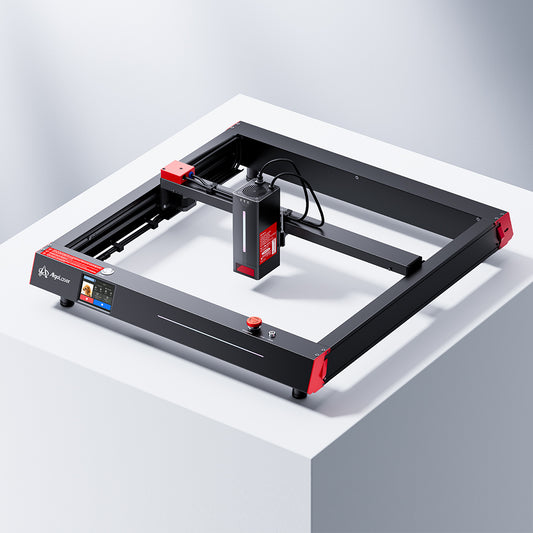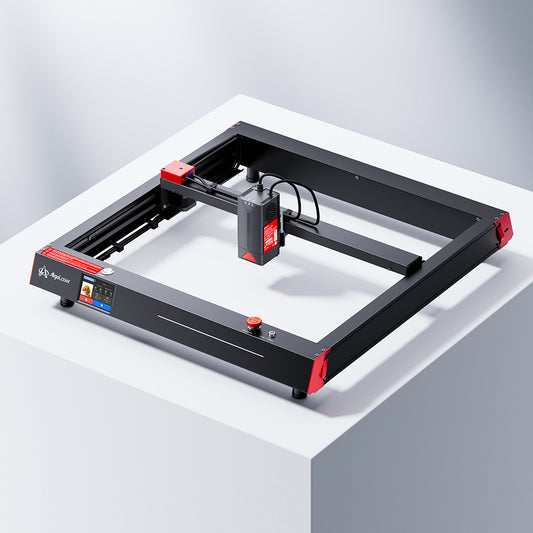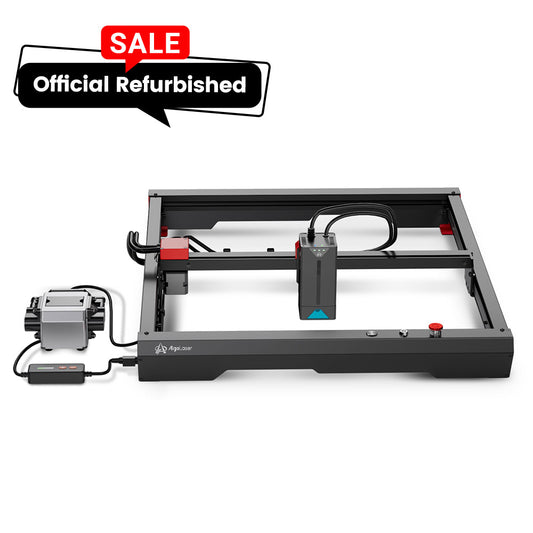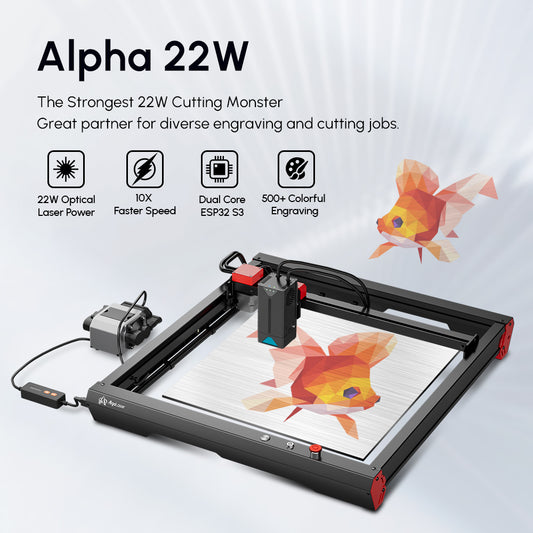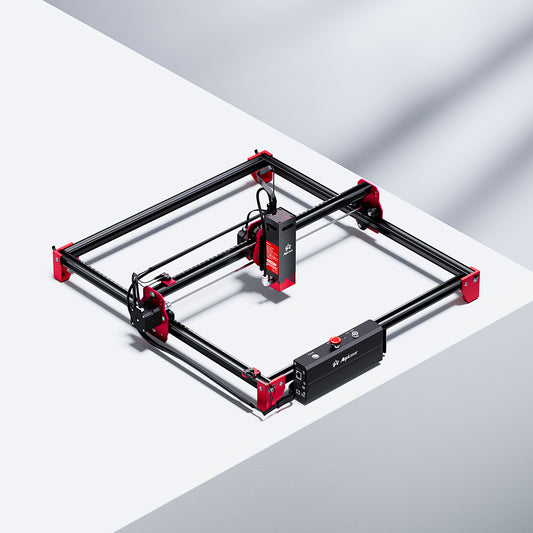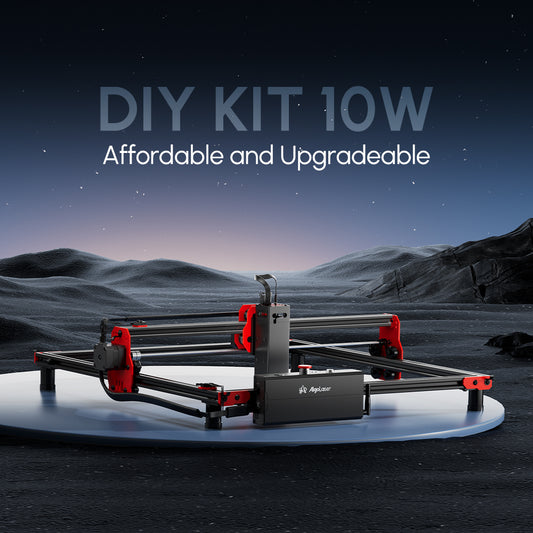Laser Engraving vs. Paper Cutting: Pros, Cons, and Creative Possibilities
Paper may seem simple, but in the hands of makers, artists, and small businesses, it transforms into something extraordinary. From traditional paper crafts to high-tech laser engraving, the methods available for cutting and decorating paper have expanded dramatically. But with so many tools on the table—scissors, knives, die-cut machines, lasers, and mechanical engravers—how do you choose the right one?
Event Dates: November 8th – November 30th, 2025
Event Page: Laser Engraver Black Friday
👉 Visit AlgoLaser Black Friday Laser Engraver Deals 2025 and craft your perfect engraving setup today!
Use the 10% discount code: CodeFrank at checkout to enjoy instant savings on your order.
⚠️ Note: Discount codes cannot be combined with minimum spend offers (such as “Spend $300, Get $30 Off”). Please select the promotion that gives you the best overall value.

1. Laser Engraving: High-Tech Precision
Laser engraving has surged in popularity because of its ability to turn digital designs into physical art almost instantly. By directing a focused beam of light, lasers burn or vaporize the paper's surface, leaving behind fine marks, textures, and patterns.
Advantages of Laser Engraving
· Unmatched detail:The
· Consistency: Every piece comes out identical, making it ideal for batch work like wedding invitations or business branding.
· Durability: The marks don't fade like ink—they're physically burned into the paper.
· Design flexibility: With software like LightBurn, CorelDraw, or Illustrator, you can tweak designs in minutes.
Drawbacks of Laser Engraving
· Cost barrier: A quality CO₂ or diode laser engraver costs anywhere from a few hundred to several thousand dollars.
· Safety issues: Burning paper produces smoke and sometimes discoloration—ventilation and filtration are essential.
· Learning curve: Dialing in speed, power, and focus takes trial and error. Too much power, and the paper burns through; too little, and nothing shows.
· Material sensitivity: Glossy, thin, or coated papers may not engrave cleanly.
Community insight: On r/Laserengraving, one user described how they ruined dozens of sheets before finding the right balance of settings:
"Paper is way trickier than wood or acrylic. Too slow and it burns; too fast and nothing shows. Once you nail your settings, though, the results are stunning."
2. Laser Cutting Paper: Speed and Scalability
Laser cutting differs from engraving in that the beam cuts all the way through the paper, leaving clean edges instead of surface markings. It's perfect for lace-like wedding invitations, stencils, or packaging prototypes.
Advantages of Laser Cutting
· Crisp, complex cuts: Designs that would take hours with scissors can be cut in seconds.
· Repeatability: Every copy is identical, saving massive time for bulk projects.
· Fast prototyping: Designers can test new patterns quickly by adjusting files instead of retooling blades.
Drawbacks of Laser Cutting
· Scorching edges: Paper burns easily, and improper settings leave brown marks.
· Curling and warping: Thin stock can warp under heat. Masking tape or lower power helps.
· Still requires investment: A laser engraver is usually the go-to for paper cutting, which isn't cheap.
Community tip from Reddit:
"When cutting thin cardstock, always run at higher speed and lower power. You'll avoid burn marks and keep edges cleaner." – r/LaserCutting
3. Traditional Paper Cutting: The Handmade Touch
For centuries, artists and crafters have used knives, scissors, or die-cut machines to shape paper. While slower and less precise, these methods remain popular for their affordability and personal charm.
Advantages of Traditional Cutting
· Accessible and affordable: No need for expensive machines—just a blade and creativity.
· Tactile and personal: Every piece feels handmade and authentic.
· Creative freedom: Artists can improvise and adapt as they cut, something lasers can't replicate.
Drawbacks of Traditional Cutting
· Time-intensive: Complex designs can take hours or even days.
· Inconsistent results: No two pieces are exactly alike.
· Not scalable: Producing 500 identical invites by hand is a nightmare.
Community perspective: Many artists argue that imperfection is part of the art. One Redditor put it best:
"Sure, a laser can do in 30 seconds what takes me hours. But my customers want something only my hands could make—that's where the value is."
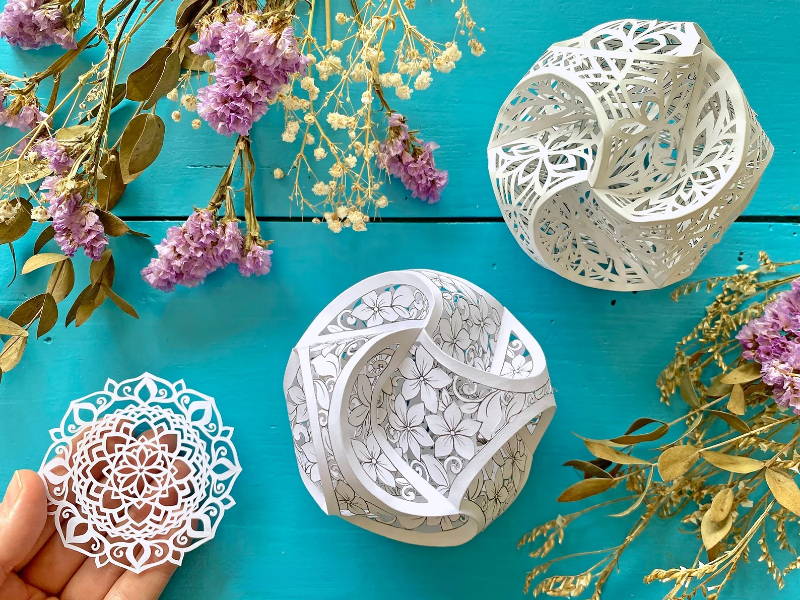
image credit: Hattifant - Etsy
4. Mechanical Engraving: Heavy-Duty But Outdated
Mechanical engraving uses rotary tools to carve into surfaces. While great for metals and plastics, it's rarely used for paper today.
Pros:
· Excellent for deep relief work on hard materials.
· Produces tactile, long-lasting engravings.
Cons:
· Paper is too delicate—tools tear rather than carve cleanly.
· Requires clamping, which damages thin materials.
· Tools dull quickly with use.
For most paper projects, lasers have completely replaced mechanical engraving.
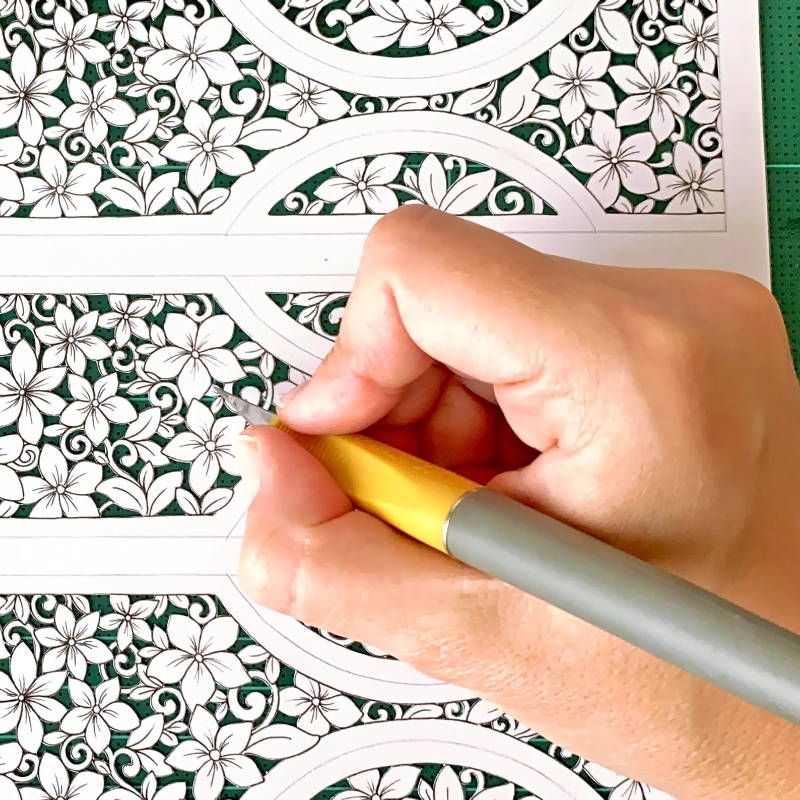
image credit: Hattifant - Etsy
5. Real-World Applications
· Laser Engraving: Photo albums, bookmarks, logos on stationery, layered paper art.
· Laser Cutting: Wedding invitations, pop-up cards, stencils, packaging prototypes.
· Traditional Cutting: Handmade greeting cards, shadow boxes, custom collages.
· Mechanical Engraving: Mostly industrial uses—engraving tags, metals, or plastics.
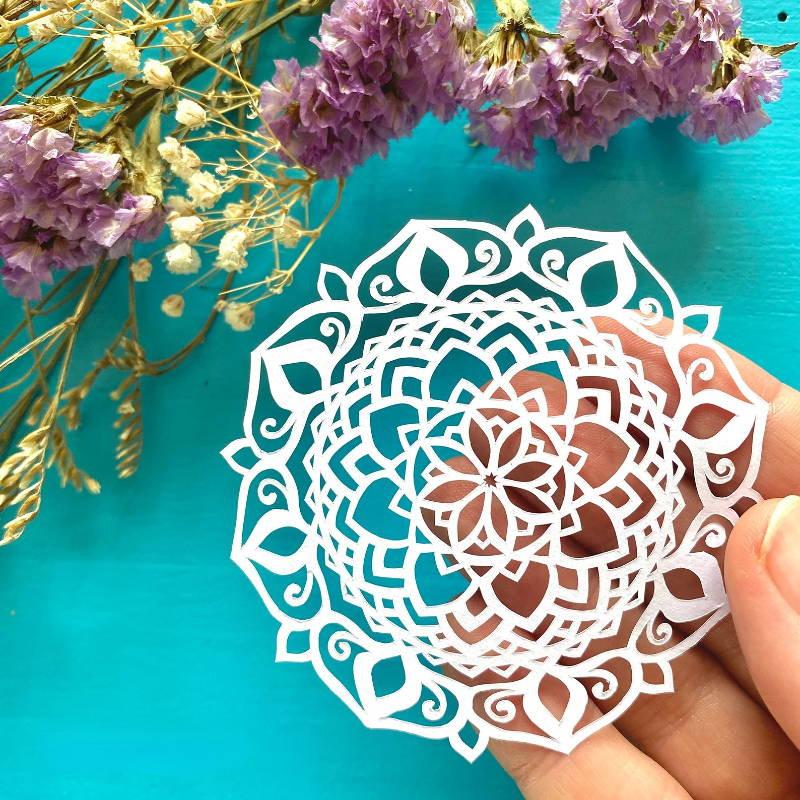
image credit: Hattifant - Etsy
6. Quick Comparison Table
| Method | Strengths | Limitations |
|---|---|---|
| Laser Engraving | Ultra-detailed, durable, versatile | Expensive, smoke/fumes, learning curve |
| Laser Cutting (Paper) | Fast, precise, scalable | Burn edges, equipment cost, thin paper warps |
| Traditional Paper Cutting | Low cost, handmade aesthetic | Slow, inconsistent, not scalable |
| Mechanical Engraving | Great on metal, durable relief | Not for paper, tool wear, requires clamping |
7. FAQs About Paper Cutting and Engraving
Q1: Can any laser engraver work on paper?
Yes, but diode lasers are less effective on thin or glossy paper. CO₂ lasers usually perform best.
Q2: How do I avoid burn marks when cutting paper?
Use higher speeds with lower power, and consider applying transfer tape to protect surfaces.
Q3: Is laser engraving profitable for paper products?
Absolutely. From wedding invitations to branded packaging, demand for custom paper goods is strong. Many Redditors report making steady side income from Etsy or local shops.
Q4: What’s the best paper for laser cutting?
Cardstock, Kraft paper, and cotton-based papers tend to cut cleanly without too much scorching.
Q5: Can I combine methods?
Yes! Some creators engrave details with a laser, then hand-finish with scissors or embossing tools for a hybrid handmade-tech look.

8. Final Thoughts
Each method of working with paper—laser engraving, laser cutting, traditional cutting, and mechanical engraving—offers unique strengths.
· Laser engraving is best for intricate, professional, and repeatable work.
· Laser cutting shines for clean edges and scalability.
· Traditional methods win in affordability and character.
· Mechanical engraving is largely obsolete for paper but still valuable in other industries.
Ultimately, the choice depends on your goals. If you're making a few handmade cards, scissors and patience may be all you need. If you're running an Etsy shop with hundreds of custom orders, investing in a laser cutter or engraver pays off fast.
Paper may be fragile, but the possibilities for creativity are stronger than ever.

